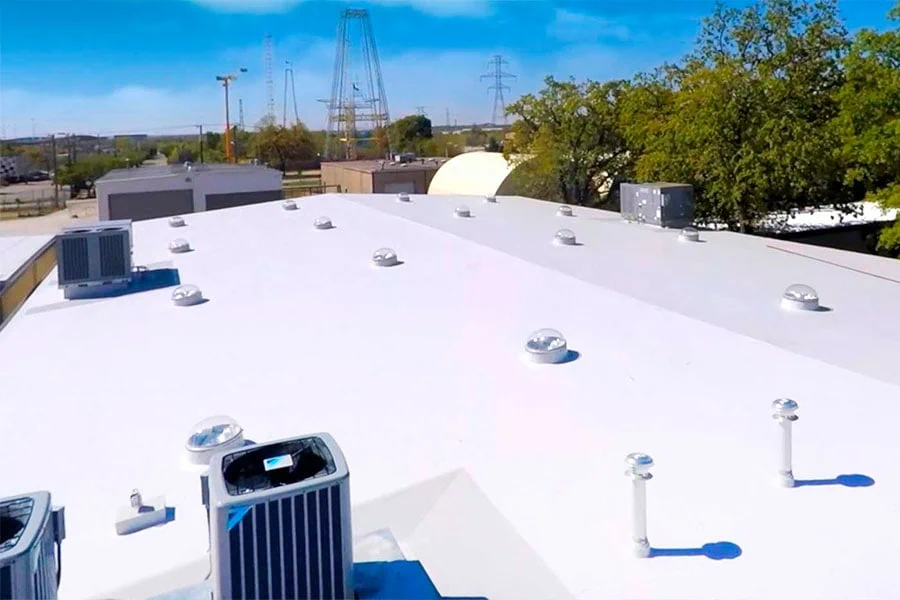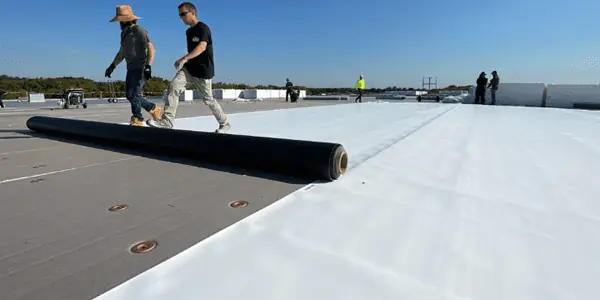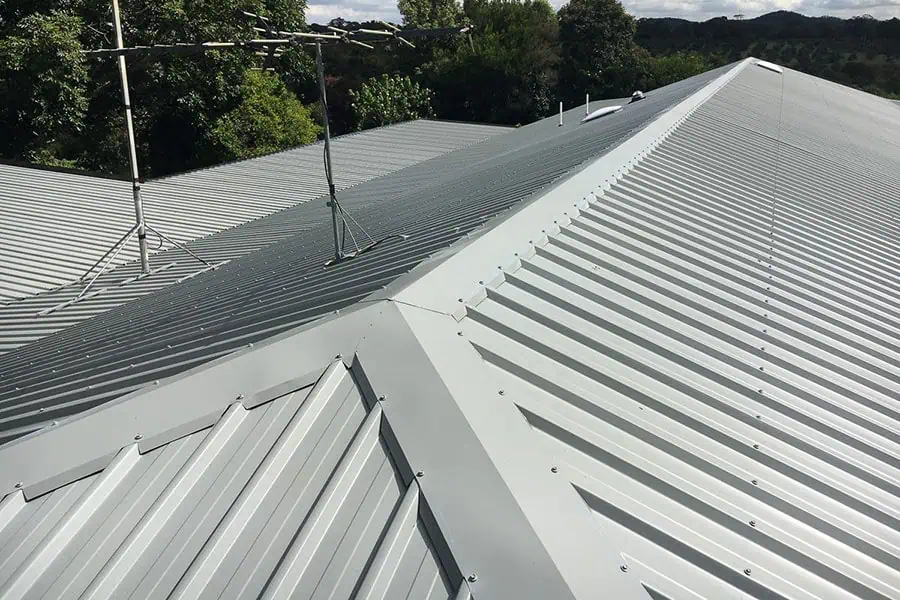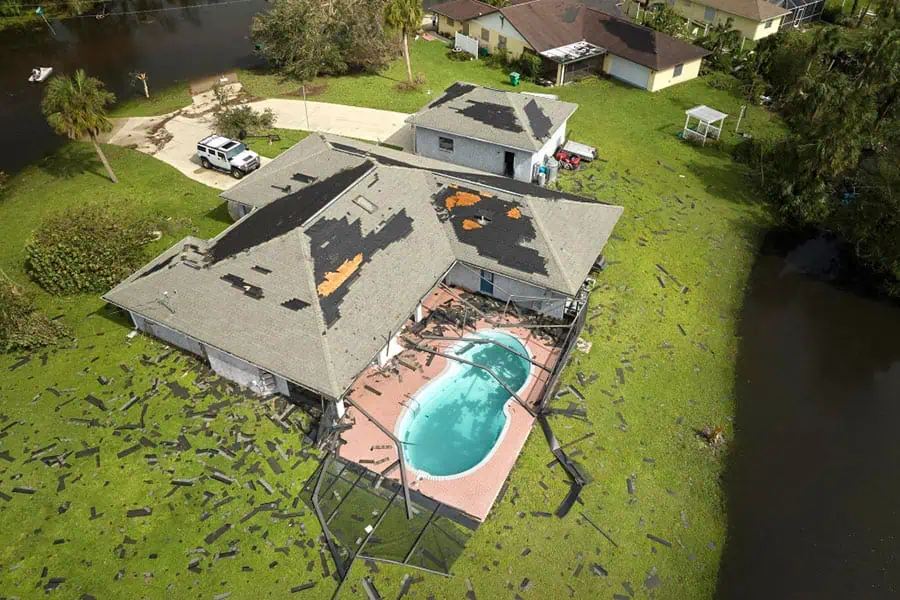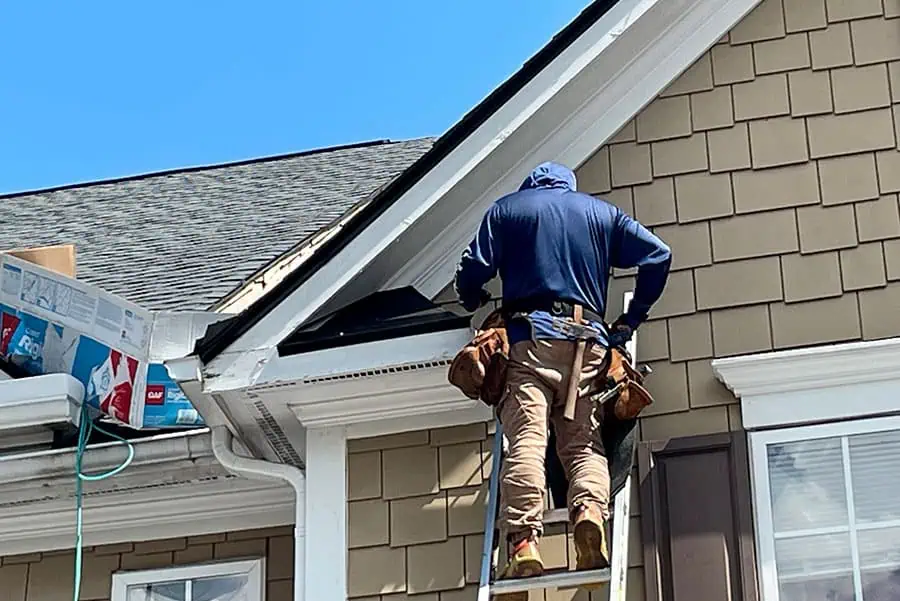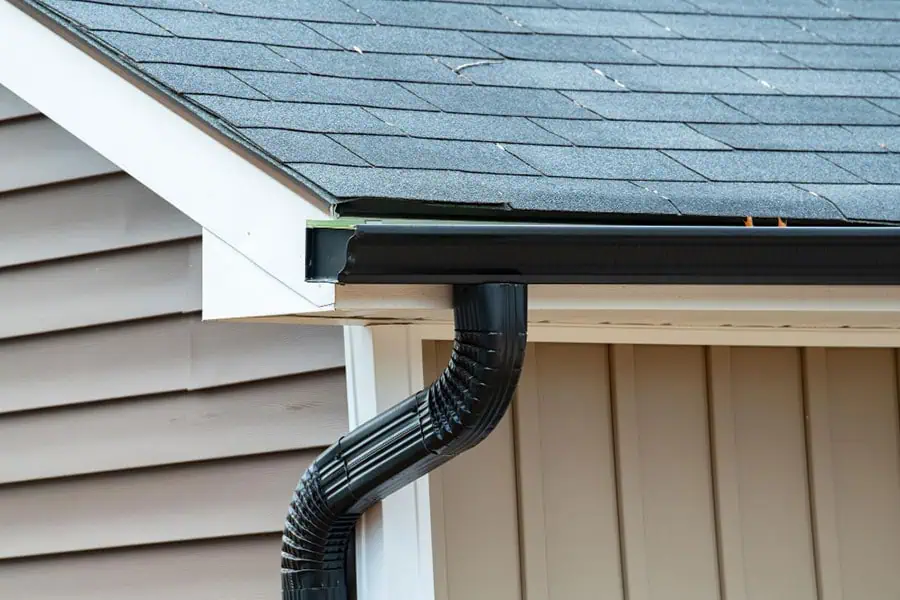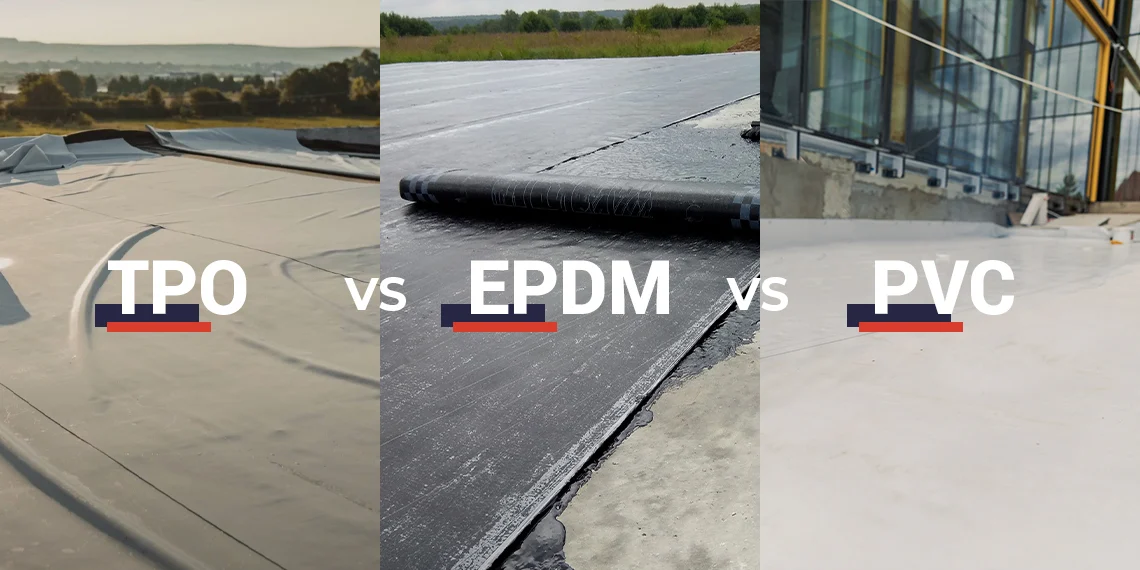Imagine transforming your home from a simple building into the highlight of the neighborhood. It's not just about function; it's about style, identity, and making a strong impression.
The secret to achieving this transformation? Choosing the right roof shingle color.
Benefits of Curb Appeal
Creating the perfect exterior for your home not only makes you proud but also increases its curb appeal, which is important for its value. A tasteful selection of asphalt roofing shingles can transform the appearance of your home, making it the highlight of the neighborhood. Homebuyers are particularly attracted to homes with fresh, new roofs embodying security and investment protection.
When comparing shingle types, architectural asphalt shingles rank higher in curb appeal than their 3-tab counterparts. Their distinguished appearance enhances the texture and depth of your home's design and infuses character and charm, substantially elevating its street-side allure.
| Shingle Type |
Aesthetic Impact |
Durability |
Cost Efficiency |
Best For |
| Architectural Shingles |
Enhanced texture and depth |
High |
Moderate |
Homes needing durability with style |
| 3-Tab Shingles |
Basic, uniform appearance |
Moderate |
High |
Budget-conscious projects with less focus on style |
Enhancing the overall look of your home
The right shingle pattern goes beyond mere protection from the elements; it's an aesthetic statement. A matching shingle color can make your siding stand out, adding contrast that highlights your home's style. Lighter colors are popular for their soothing demeanor and ability to reflect natural light, effectively contributing to energy efficiency by cooling your home in a hot climate.
The palette extends into natural hues like weathered wood, barkwood, and charcoal for those aiming to integrate their style without overpowering the natural landscape. Brands like GAF offer an inclusive range of color options, ensuring their selections resonate with your taste and the architectural style of your home.
Increasing its market value
A roof isn't just a shelter; it's a canvas that covers up to 40% of your home's visual exterior and plays a crucial role in your property's market valuation. Using high-quality materials like metal or cedar shake shingles can also increase your home's resale value.
Harmonizing the roof with the architectural style and color of your siding or brick amplifies this effect, creating a cohesive aesthetic that can captivate potential buyers. Staying up to date on popular color combinations and regional market preferences is key, as is adherence to homeowners' association standards.
Doing so enhances your home's appeal and strategically positions your property within the market, potentially boosting its desirability and monetary value.
When choosing the right shingle pattern, your decisions are some of the biggest in terms of aesthetics and function. With these choices, you're crafting your home's character and investing in its future worth.
Whether you opt for designer shingles that reflect a more personal taste or those that blend with the architectural trends of your neighborhood, these building materials will be a defining feature of your home. Remember that shingle patterns can transform your home from a mere structure into a striking statement.
Understanding Roof Shingles
Architectural shingles are different from standard shingles because of their unique design and performance. Unlike the uniform appearance of standard 3-tab shingles, architectural asphalt shingles boast a random pattern that adds visual depth, creating the illusion of a wood shake roof. These shingles are not just about looks; their varying sizes and shapes make them a sturdy option that can withstand the elements more effectively by providing better wind resistance and durability against harsh weather conditions.
Luxury asphalt shingles, commonly called designer or premium shingles, are the crème de la crème of roofing options. Portraying the grandeur of natural slate, these heavy-duty shingles are both larger and thicker, promising longevity that can span up to half a century under ideal conditions. The distinct shadow lines and richer textures create a high-end, robust roofing aesthetic.
On the practical front, the choice between highly reflective shingles and their less reflective counterparts can be influenced by the climate you live in. Homes in warmer regions like Central Florida, can benefit from highly reflective shingles that fend off the sun's rays, while homes in cooler locales may opt for dark shingles for their heat-absorption properties. Brands like CertainTeed Landmark and Owens Corning Duration Designer have innovated with color-blended asphalt shingles, adding an extra layer of intrigue and dimension to the roof - although these blends primarily enhance aesthetics rather than thermal performance.
Exploring the variety of colors available
The spectrum of roof shingle colors has been carefully curated to complement the variousarchitectural styles that grace our neighborhoods. For homes with a historical bent, such as those in Plantation, Colonial, Victorian, or Queen Anne styles, choosing colors that echo the elegance of black, grey, brown, green, or blue can mirror traditional materials like slate or wood shake. These classic hues remain a foolproof choice, ensuring your home's roof is both timeless and stylish.
Dark shades of gray, blue, and brown are among the popular choices that offer versatility and depth, adaptable to many exterior color schemes. Lighter colors, including shades of brown, gray, and beige, have surged in popularity, providing a fresh and modern vibe while reflecting more sunlight and potentially saving on cooling costs during warmer months.
Finding synergy with the surrounding neighborhood's palette can also improve your home's curb appeal. A well-chosen roof color doesn't need to match the neighbors directly but should harmonize with the local aesthetic to enhance the collective visual flow of the street or community.
Creating a rich contrast between the roof and other exterior elements is crucial to avoid a flat or mismatched look. Consider the color interplay with side panels, trims, doors, and window shutters for a harmonious and attractive appearance. Whether you're partial to a cozy, rustic look with shades of brown and gray or prefer a stark and striking contrast, the right shingle color will be the crowning glory of your home's exterior design.
| Color Choice |
Benefits |
Ideal for |
| Darker Shades |
Adds depth, elegance |
Larger homes, highlighting architectural features |
| Lighter Shades |
Enhances spaciousness, reflects heat |
Smaller homes, hot climates, modern aesthetics |
| Natural Tones |
Blends with the environment |
Homes in natural settings, traditional styles |
Choosing the Right Color
Selecting the perfect roof shingle color is about striking the right balance between aesthetics, energy efficiency, and overall architectural harmony. Dark shingles, such as dark gray, dark blue, and dark brown, are popular because they add depth to a home's exterior and can craft an image of elegance and solidity.
In contrast, lighter shades like light brown, light gray, and beige are increasingly sought after for their modern appeal and potential energy-saving benefits due to their ability to reflect sunlight.
However, more than preference comes into play when settling on a hue for your rooftop terrain. It's crucial to consider how the chosen color will complement the entire aesthetic of your home, as the roof can make up to 40% of your home's visible exterior.
Additionally, while dark colors can absorb more of the sun's warmth, the actual difference in attic temperature compared to lighter colors is often minor. Plus, by choosing a shingle color that flows with the neighborhood, you not only enhance visual consistency but could also elevate curb appeal and, subsequently, property value.
Discussing the impact of darker colors on a home's aesthetics
Embracing the bold character of darker roof shingles can be a transformative decision for your home's exterior. Darker colors have a grounding effect; they make large homes appear more proportionate and can accentuate their architecture. Particularly when applied to houses with complex structures, such as multiple peaks and valleys, a dark gray or textured shingle can draw attention to these features, heightening the home's architectural dynamics.
And yet, for the desired visual harmony, the contrast between dark shingles and home siding is a critical design decision. Dark tones, such as rich forest greens and vibrant reds, are especially recommended for artisanal craftsman homes, punctuating their aesthetic allure. In essence, a careful selection of darker shingles can elevate the majesty and stature of a house when paired thoughtfully with the building's overall character.
Exploring the popularity of brown and dark gray shingles
Brown shingles have a timeless appeal, with shades ranging from desert tan to deep chocolate. They suit multiple architectural styles, including the stately Tudor and charming Craftsman. Light brown shingles are a subtle favorite, lending older homes a classic elegance. In contrast, dark brown variants contribute a robust and earthy dimension to a home's overall appearance.
Dark gray shingles, embraced for their sophisticated and chic look, are sought-after for contemporary abodes. They work harmoniously with a variety of lighter siding colors, providing a background that is both stylish and versatile. Notably, brown shingles bring out a distinct and stylish texture and contrast when paired with white siding, making light brown a particularly popular choice among homeowners looking for that engaging visual allure.
Considering lighter color options and their benefits
Lighter shingles are not just visually spacious; they bring tangible coolness to a home's interior. Reflecting sunlight rather than absorbing it, these paler hues lower your home's internal temperature during hot months, contributing to a more comfortable living space and energy savings.
When paired with complementary exterior paint colors, these lighter shades can enhance a home's aesthetic appeal.
Imagine a light blue-gray shingle on white sidings or a tan roof on a beige exterior—this color coordination creates a pleasing sense of harmony and distinctive style..
In warmer climates, choosing lighter-colored shingles and siding can help reflect radiant heat from the sun, resulting in cooler indoor temperatures while also enhancing the home's appearance.
Highlighting the timeless appeal of white shingles
White shingles are the epitome of classic design. They exude a clean, crisp look, enhancing a home's curb appeal with their understated and minimalist beauty.
These shingles allow homeowners to experiment with contrasting elements like colorful shutters and bold doors without overwhelming the exterior aesthetic.
Particularly favored in regions with abundant sunshine, white-toned shingles are adopted to deflect heat and promote a cooler home environment. Their neutral yet fresh appearance combines varied architectural styles and stands out against lush vegetation and landscaping.
The neutral nature of white shingles makes coordinating with exterior elements like siding or brick effortless, solidifying their status as a timeless and sophisticated housing staple.
Types of Shingles
When embarking on a roofing project, understanding the types of shingles available is critical. Asphalt shingles, favored for their cost-effectiveness and choice of colors, top the popularity charts across the United States. They come in an array of types suited for different aesthetic preferences and budgets:
| Shingle Type |
Description |
Lifespan |
Aesthetic Quality |
Cost (per square*) |
| Strip Shingles (3-tab) |
Simple, uniform look |
15-20 years |
Basic |
$70 - 120L |
| Wooden Shingles |
- Machine-sawn, uniform appearance.
- Hand-cut, rugged texture.
|
20-30 years |
Natural, rustic |
$300 - 600+ |
| Dimensional Shingles |
Multi-layered, textured appearance |
30+ years |
Rich, upscale |
$100 - 150 |
| Luxury Shingles |
Mimic natural materials like slate/wood |
50+ years |
Premium, elegant |
$200 - 400+ |
* “per square” refers to a ‘roofing square,’ which equals 100 square feet.
Note: Prices can vary widely based on brand, region, and additional factors such as installation costs and specific product features. For precise pricing, contact your local supplier or roofing contractor.
Color-blended choices in asphalt shingles allow homeowners to enhance their home's visual appeal. From the warmth of autumnal browns to the cool serenity of greys and greens, color blending lends a nuanced charm to any home. Owens Corning and CertainTeed Landmark series offer such architectural shingles, providing homeowners with various hues that can complement their homes. GAF's Timberline UHDZ shingles go a step further, offering a striking visual appeal with their Dual Shadow Line and guaranteeing extended algae resistance and workmanship with a 30-year warranty.
Exploring different shingle types, including asphalt roofing shingles and designer shingles
Architectural or dimensional shingles offer the best of both form and funtion. Their multi-layered structure adds architectural depth and durability similar to wood shake roofs. For those with a higher budget and discerning taste, the premium tier of luxury asphalt shingles offers superior protection and sophisticated designs meant to stand the test of time.
Among the industry leaders, GAF Master Elite shingles have carved a niche for themselves. They provide top-tier defense against the elements and offer a palette of rich color variations to satisfy any design aspiration.
The wide array of styles available in luxury and designer asphalt shingles enables homeowners to upgradetheir roof's durability and aesthetic value, reflecting their style while respecting architectural integrity.
Discussing the benefits of weathered wood and natural wood shingles
Weathered and natural wood shingles bring organic beauty to roofing solutions. Machine-sawn wood shingles present a neat, uniform look, while hand-cut shakes showcase more character with their rugged texture.
These natural materials offer a classic aesthetic and typically receive treatment to resist moisture and decay. However, they come with considerations for maintenance and compliance with local building codes, especially regarding fire resistance.
Wood shingles usually have a Class C fire rating, and some don't have any. Their usage may be limited in fire-prone areas or require additional fire-resistant treatment. Homeowners must be diligent about maintenance to minimize potential fire hazards.
Despite these concerns, the unique look of wood on a rooftop adds an irreplaceable charm and can significantly enhance a property's appeal.
Considering the versatility of black, green, and white shingles
The versatility of shingle colors plays a significant role in the exterior design. Classic black shingles create a universally appealing look that effortlessly suits most color schemes and styles, from the traditional to the contemporary. By contrast, green shingles resonate well with properties nestling in natural landscapes, blending seamlessly with the surroundings and imparting a sense of tranquility.
White shingles offer a striking contrast, particularly for homes with a white exterior. They can accentuate the building's profile against darker features such as shutters or trims. These colors' adaptive nature and ability to complement various siding materials and hues open up a broad canvas for homeowners to express their style while contributing to the street view. This factor can significantly impact the overall aesthetic of a neighborhood and the property value of individual homes.
Coordinating with Other Exterior Features
When choosing shingle patterns for your home, it's crucial to consider the harmony between your new shingles and your home's existing exterior features. Elements such as patios, stone walls, and wooden arbors can significantly affect the final look of your home and, therefore, should guide your selection. For example, the subtle tones found in stone can influence your choice of a complementary color palette on the roof.
Moreover, the material or color of window and door trims must also be considered. A well-coordinated trim and shingle combo can create an appealing frame for your home's aesthetic. Considering these elements, it becomes clear that the color and pattern of your roof shingles should be carefully considered after weighing material suitability with environmental conditions and cohesion with the architectural style.
While it may be tempting to repaint wood siding or brick for a quick aesthetic change, remember that altering features like stucco or unreversible masonry can be prohibitively costly and difficult. Utilizing style boards and visualization tools is practical and can simplify decision-making.
These tools can ensure that the chosen shingle shade and material align with your taste and the desired overall look of your home.
Discussing the importance of considering the color of your siding and building materials
The color of your siding is a cornerstone in the palette of your home's exterior and should guide your choice of roof shingle color. If your home's siding boasts lighter shades, a roof of similar hues can expand the sense of space, particularly for smaller homes. Conversely, homes adorned with darker siding may benefit from shingles in dark tones to maintain a harmonious and well-balanced exterior.
Contrast is critical; too little and the home may appear monotonous, while the right amount can accentuate architectural details, creating an engaging and attractive appearance. Neutrally colored shingles offer a safe bet, coordinating effortlessly with different exterior elements and simplifying potential changes to the home's color scheme.
Here's a guideline list to help coordinate siding and shingle colors:
- Light siding with light shingles for space enhancement
- Dark siding with dark shingles for cohesive aesthetics
- Contrasting colors to highlight home features and prevent blandness
- Neutral shingles to complement diverse design elements
Exploring how different shingle patterns can complement different architectural styles
Shingle patterns are not one-size-fits-all and can beautifully echo the architectural style of your home. For natural wood-sided homes or coastal abodes, shingle choices in deep greens or sun-bleached hues can bring out their inherent charm. Rusty reds or orange shingles might be the ideal topping for stucco-sided homes, while classical, traditional houses often show their best with conservative, neutral roofing.
For houses with large fieldstone veneers, shingle patterns that contrast in size and are less densely arranged complement the stonework without overwhelming it. Opting for restrained hues further ensures that the stonework remains the focal point. Bold house exteriors can benefit from paler roof shingles, creating a desirable contrast that draws the eye.
Multiple facings on the house open up opportunities for diverse color schemes. Roofs covering these homes can use shingles that resonate with both, standing out and tying the look together for a distinguished outcome.
Considering the impact of color options in a hot climate
In warm climates, the color of your shingles is not just about looks — it's a functional decision that influences your home's internal temperature and energy efficiency. Light-colored roof shingles reflect more UV rays, potentially reducing cooling costs during hot summers. Conversely, a darker roof might absorb too much heat, increasing indoor temperatures.
However, the absorbed heat from dark-colored shingles could benefit colder climates by helping to melt snow and warm your home. This highlights the importance of considering regional climates when selecting your roof color.
Shingle color choice can cause a temperature variation of up to 20 to 40 degrees in the attic, underlining the impact on your home's energy consumption.
It's vital to understand how different shingle colors interact with natural sunlight and, in turn, affect your home's efficiency. An informed decision can lead to cost savings and enhance comfort throughout the seasons, demonstrating that shingle color selection entails balancing personal style preferences and the practical implications of your local climate.
Making the Final Decision
Viewing samples in person is indispensable when making the final call on your home's shingle pattern. Lay different shingle options against your home's exterior and observe how they change with the day's light. The morning sun might bring out subtle undertones, whereas the setting sun can cast completely different shades. Take note of these variations, as your choice will live on for many years.
The color of your shingles is not just about curb appeal—it's also about how it makes you and your guests feel. Go with a hue that brings you joy and complements your preference for roofing materials. Talk to your roofing contractor, who can advise you on what shingle types and colors align with your climate, property color, architectural style, and aesthetic preferences.
Considering current trends is crucial, too. While preserving your style, acknowledge popular choices such as dark grays, blues, and browns or lighter tones like tans, grays, and beiges. This balance ensures you craft a look that's both timeless and contemporary.
Understanding the importance of personal style and preference
Your personal style is important when choosing a roof shingle color. You want a look that shows your taste, refreshes your home’s appearance, and increases curb appeal. This decision can weave your personality into the fabric of your home's design.
Choosing the right shingle color is about finding the sweet spot between architectural style, environmental factors, and personal style. Align the shingle color with your siding to create the desired contrast, or opt for a complementary shade that resonates with your home’s environment and natural light exposure. Ensure that the chosen color echoes your home's surroundings, neighborhood theme, and architectural integrity, forming a cohesive visual narrative that is uniquely yours.
Highlighting the importance of considering the overall look and feel of your home
Color contrast and harmony can reveal your home’s architectural details and establish visual congruity in your exterior. Choose a shingle pattern that enhances your home's style without overpowering it. The environment and natural lighting should also guide your decisions. Aim for a roof that integrates seamlessly with the local ambiance and flourishes under various lighting conditions.
While darker shingle colors are thought to influence attic temperatures, research indicates little practical difference. More importantly, align your roof shingle choices with neighborhood aesthetics to ensure your home adds to the area's charm, potentially enhancing its appeal and market value.
Discussing the biggest decisions in choosing the right shingle pattern
Shingle color ranks high among the significant choices when selecting a pattern. Not only will it affect your home aesthetically across different lighting and climates, but it's also a component of the harmonious interplay between roofing and other structural features like siding, trim, and doors.
The roof pattern should be carefully selected to avoid creating an unwelcome, busy appearance. If your home already sports a mix of patterns and textures, a solid color shingle may be the right choice to balance the visual complexity.
Consider how shingle colors can manipulate the perception of your home's size—a lighter roof can make it appear more expansive, while darker shades might minimize its presence. Opt for a combination that enhances your home's architectural features and contributes to a truly appealing exterior.
Ready to take the next steps? Give Dynamic Roofing Concepts a call today to schedule your roofing consultation.
